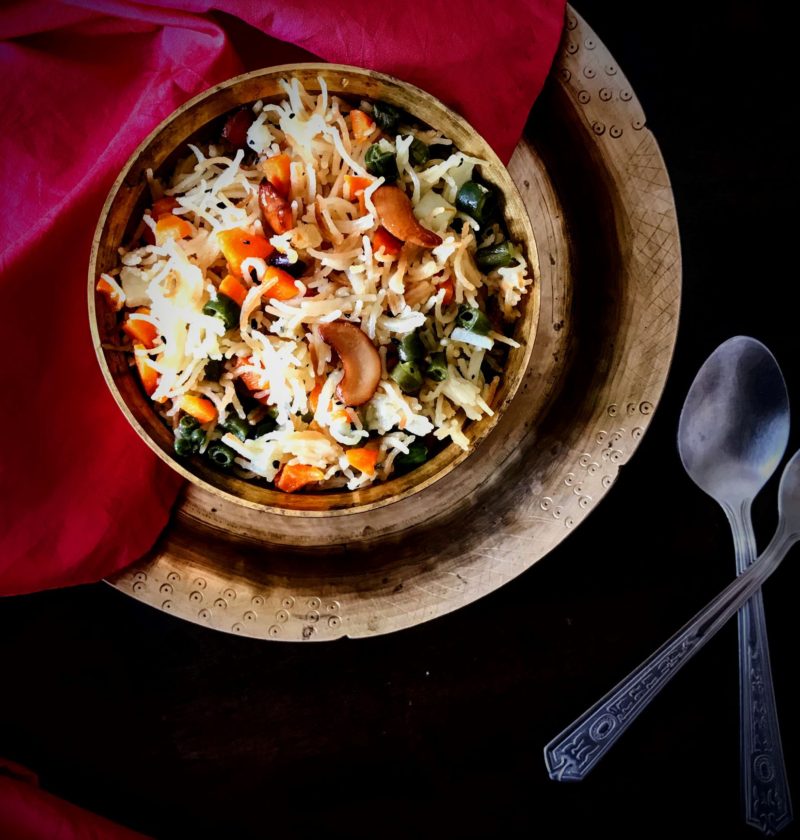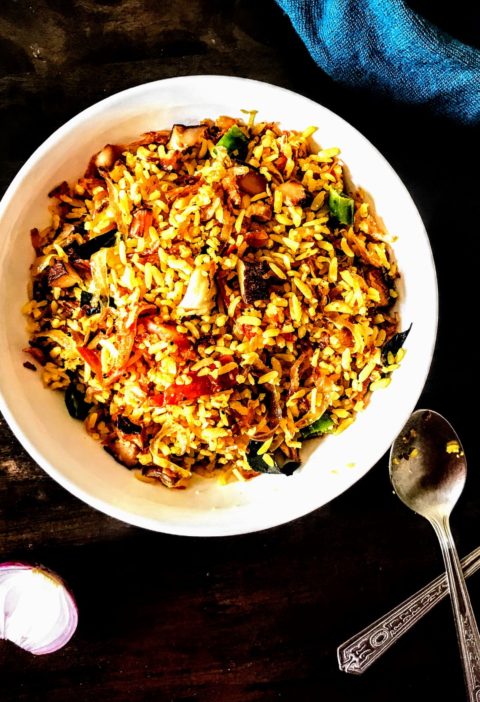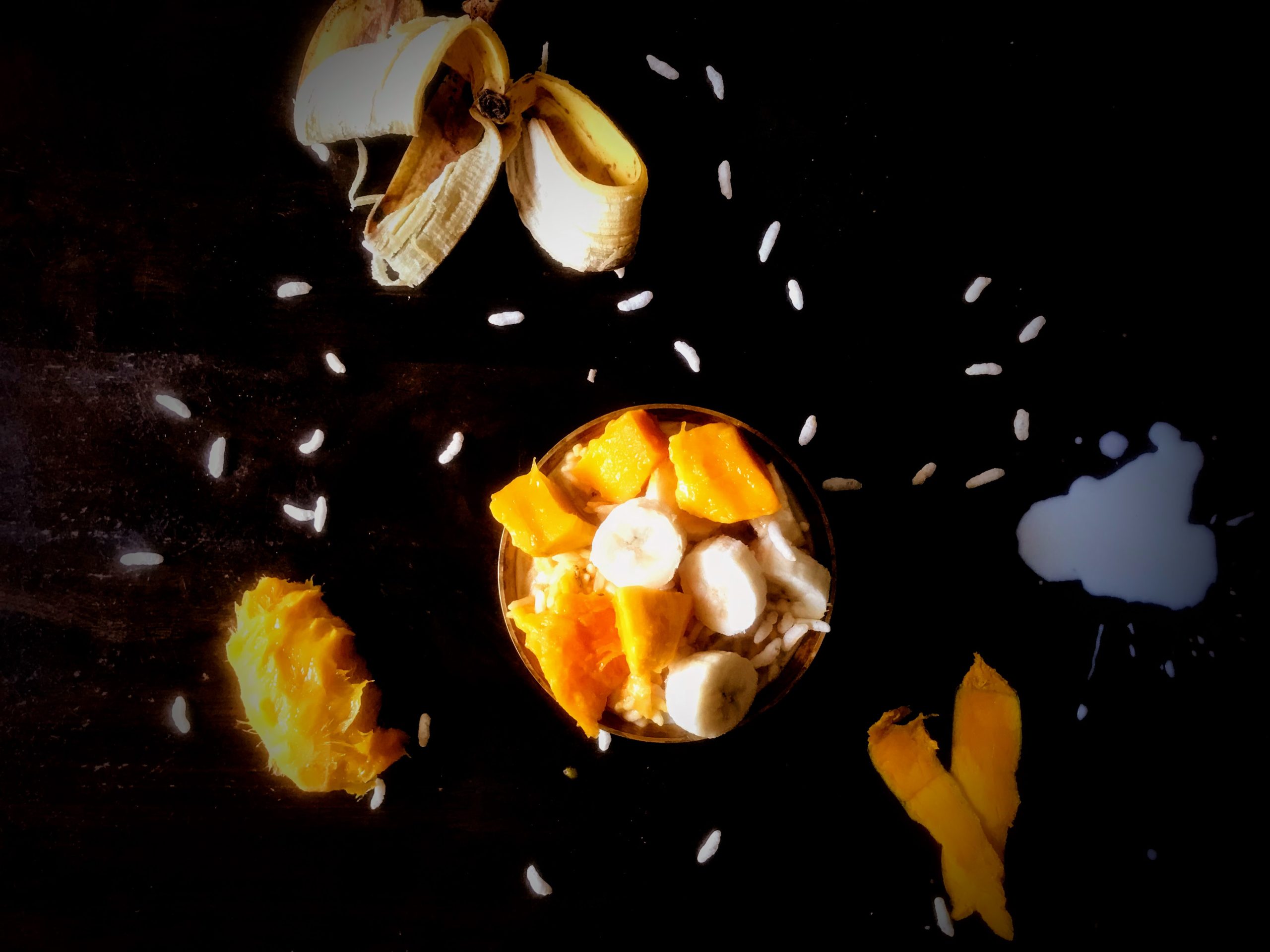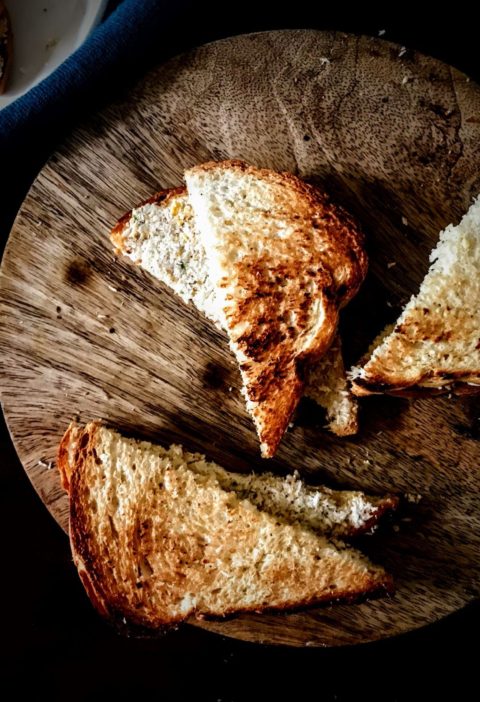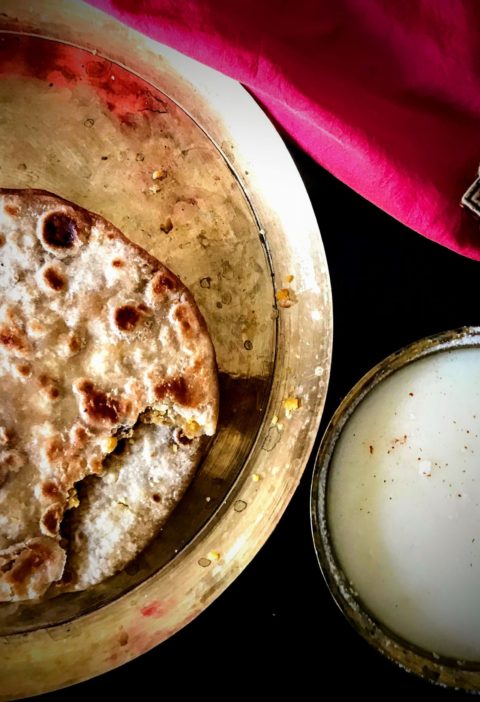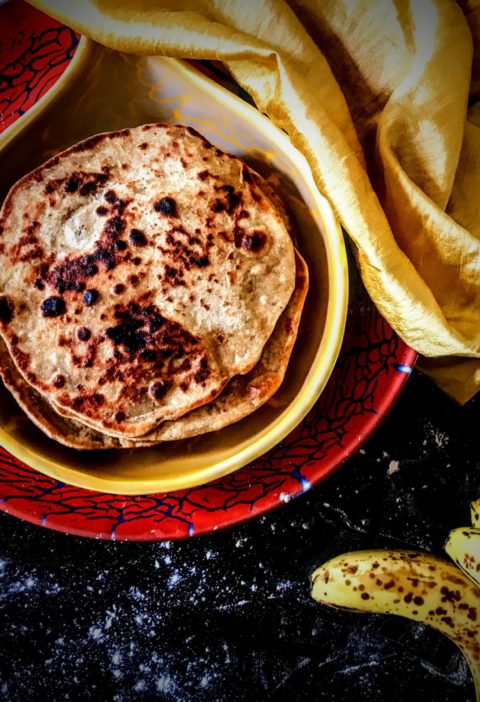India. The land of diversities, comprising diverse cultures, diverse geographies, diverse beliefs, diverse cuisines and so on. This diversity has been shaping the country in many ways since ages. These factors have more or less influenced our conduct, our behaviour, and even our food habits. It is so evident in us, that outsiders as well as insiders find the deep-rooted diversities complex as well as intriguing.
And one of the diverse components that is deep seated in our country is casteism. If someone tries to add up all the castes and sub-castes in our country, literally one has to hold oneself to his or her place, as the numbers are loyally complementing the population of our country. The dominance of caste system in our country has no boundary. In Indian society belongingness to a group sometimes even comes before one’s family. Even now, the first criteria of any nuptial agreement are based on caste. Your caste decides whether you are a friend or foe to someone. And, ironically and unfortunately, even now the ground level voting in this biggest democracy is still manipulated by casteism.
Ofcourse, no prize for guessing, as mentioned above, our culinary culture also could not escape the authority of the strong caste system prevailing in our country. Although almost eradicated (but not completely), in the past, people’s access to food items and preparation of food was mostly determined by caste. Thus, it does not come as a surprise to me when I encounter these ‘Brahmin’s Cafes’, ‘Iyengar’s Cafes’, ‘Kshatriya Bhojanalaya’, popping up in nooks and corners of cities in India.
Also, on a positive note, this influence of castes and sub-castes in our food habits, did allow many varieties of cuisines to propagate within region. The strict rule of permissible food items and ingredients made people of the respective communities come out with delicacies that the following generations are proudly devouring. As Saee Koranne – Khandekar, describes how prevalence of different communities in Maharashtra have provided varieties to Marathi Food, in her book ‘Pangat A Toast’, “In a country like India, where communities differ so greatly in lifestyle, thanks to years of social conditioning, it is impossible to talk about the cuisine of a region without talking about the communities that inhabit it. How do various communities within the same geographical region use produce differently? How do rules prescribed by faith or occupation uniquely shape the cuisine of a community?”
As I grow (Yes, I am quite old. I have already spent 38 years in this planet. But I believe I and everyone have not stopped growing) so I understand, the reason why most of the vegetarian dishes in my house were made without onion and garlic. Though slowly and gradually all the unnecessary biasedness and prejudices based on caste are fading away from my house, but some of the inherent cooking processes and recipes (as the outcome of strict adherence to caste system generations ago) still prevails. Unintentionally ofcourse, but today’s recipe post ‘No Garlic No Onion Vermicelli Upma’ dish also indicates the influence of long ingrained caste system in our kitchen.
Coming to the dish ‘No Garlic No Onion Vermicelli Upma’, although the dish does not use the popular taste and flavour enhancing vegetables like onion and garlic, but the presence of nigella seeds, ginger and ghee, ensure there is no compromise made on taste as well as flavour.
So yes, let us together filter away the bad and embrace the good things from past and most importantly good food
Click here and check out more breakfast recipes.
Recipe: No Garlic No Onion Vermicelli Upma
Preparation Time: Around 22 minutes Cooking Time: Around 40 minutes Equipment Used: Knife, chopping board, bowls, wok, turner, grater Yield: Serves 3-4
Ingredients:
- 2 carrots
- Around 25 French beans
- 1 potato
- 1 tablespoon cashew nuts
- 2 teaspoon ghee or clarified butter
- 2 cups vermicelli
- 4 tablespoon refined oil
- ½ teaspoon nigella seeds
- 1 green chilli
- 2 teaspoon salt
- 1 teaspoon sugar
- 2 cm X 1.5 cm ginger
- 2 and 1/2 cup water
Method:
- Clean, peel and chop the carrots
- Chop the French Beans
- Dice the potatoes as small pieces as possible after cleaning and peeling them
- Slice the cashews into half
- Heat a wok
- Lower the flame as soon as the wok turns hot and pour ghee into the wok
- Without wasting time, add vermicelli immediately into the ghee for roasting. Stir continuously on low flame for 4-5 minutes
- Transfer the roasted vermicelli to a bowl or another container
- Add oil in the same wok used for roasting vermicelli
- Temper the oil with nigella seeds and green chilli (broken into half) as light smoke starts emitting from the oil
- Add the vegetables into the wok, followed by 1 teaspoon salt and ½ teaspoon sugar. Cover and let the vegetables cook on low flame
- Add the roasted vermicelli into the wok. Stir and let the vegetables mix with vermicelli
- In the meantime, peel and crush the ginger piece and add the crushed ginger into the wok
- Add water and cook till vermicelli soaks water and is sufficiently soft (cooked)
- Taste and adjust salt and sugar. I have added another 1 teaspoon salt and ½ teaspoon sugar
- Switch off the flame and enjoy the dish hot
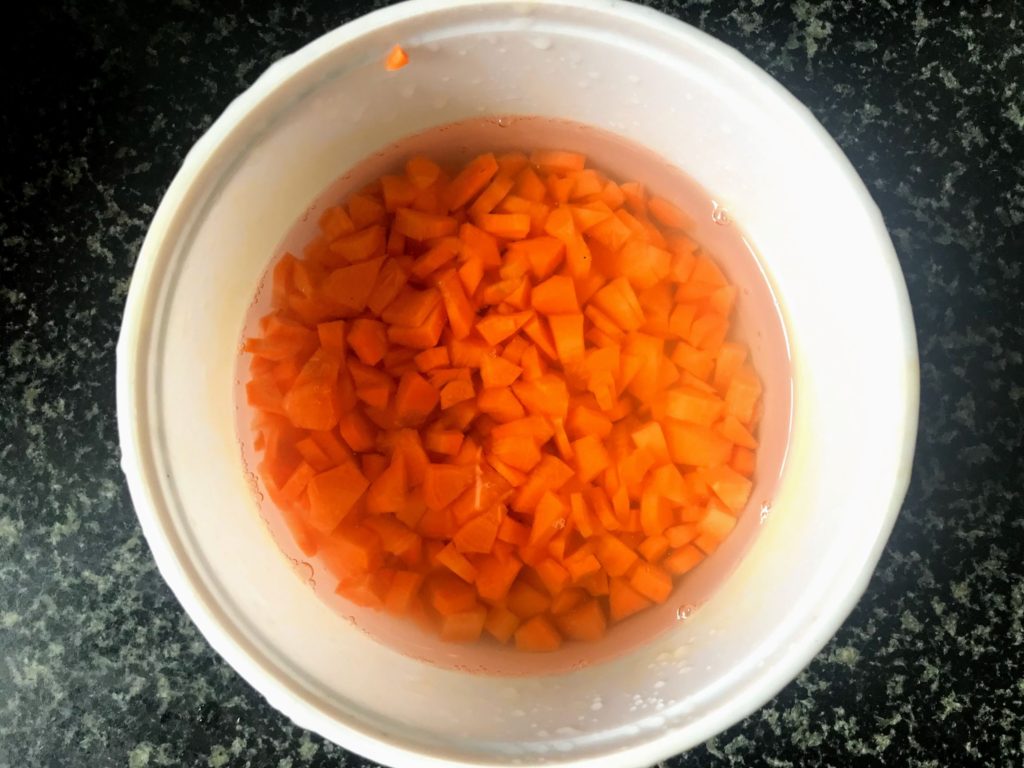
Chop carrots.
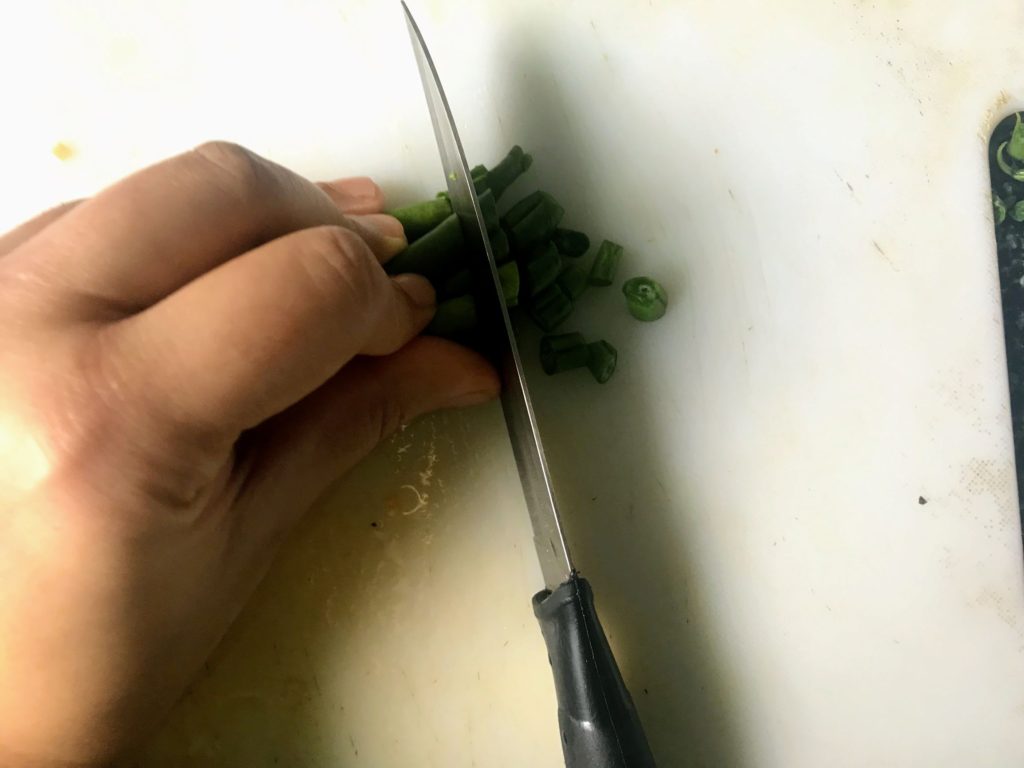
Chop French Beans.
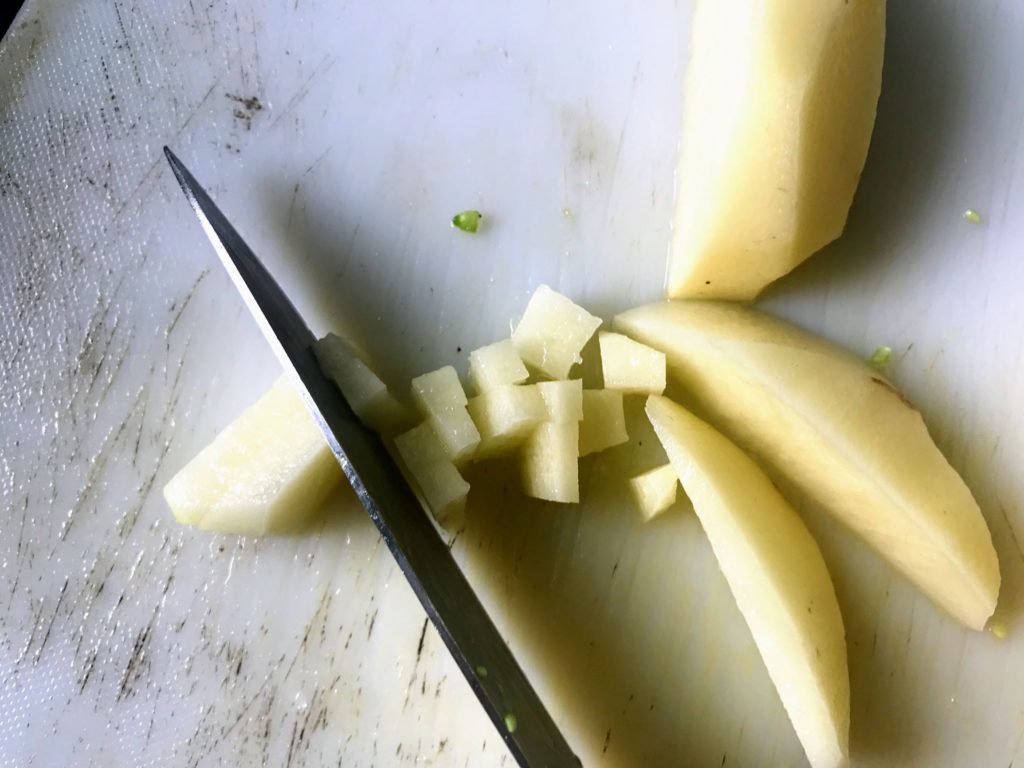
Dice potatoes as small pieces as possible.
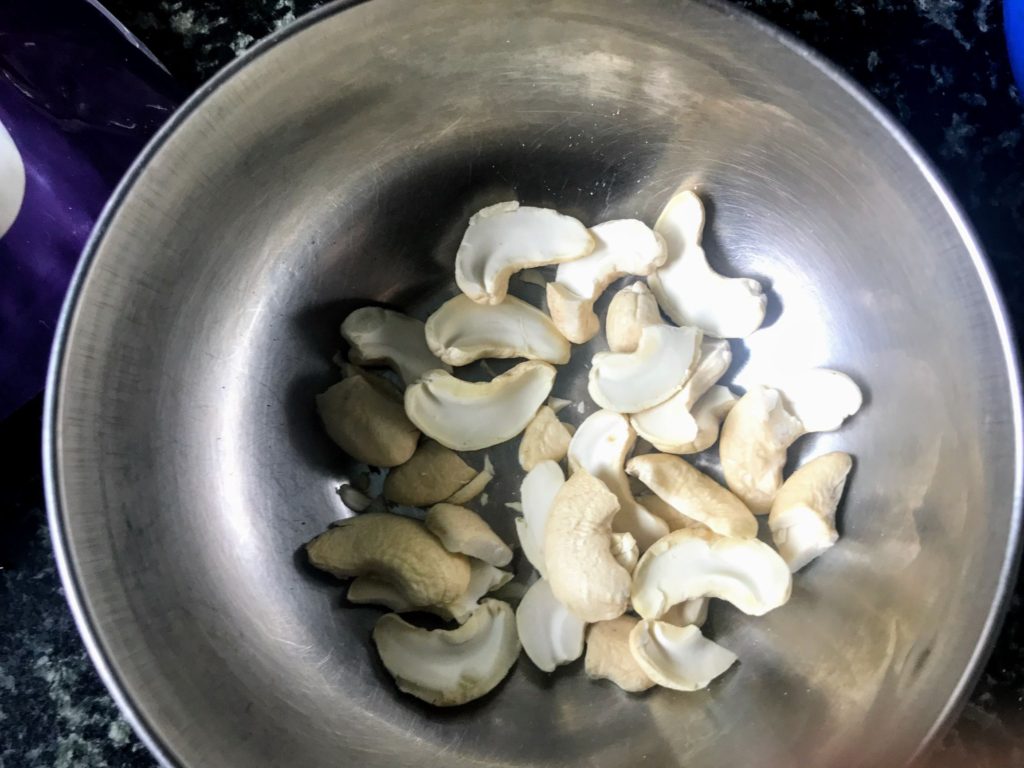
Slice cashews into half.
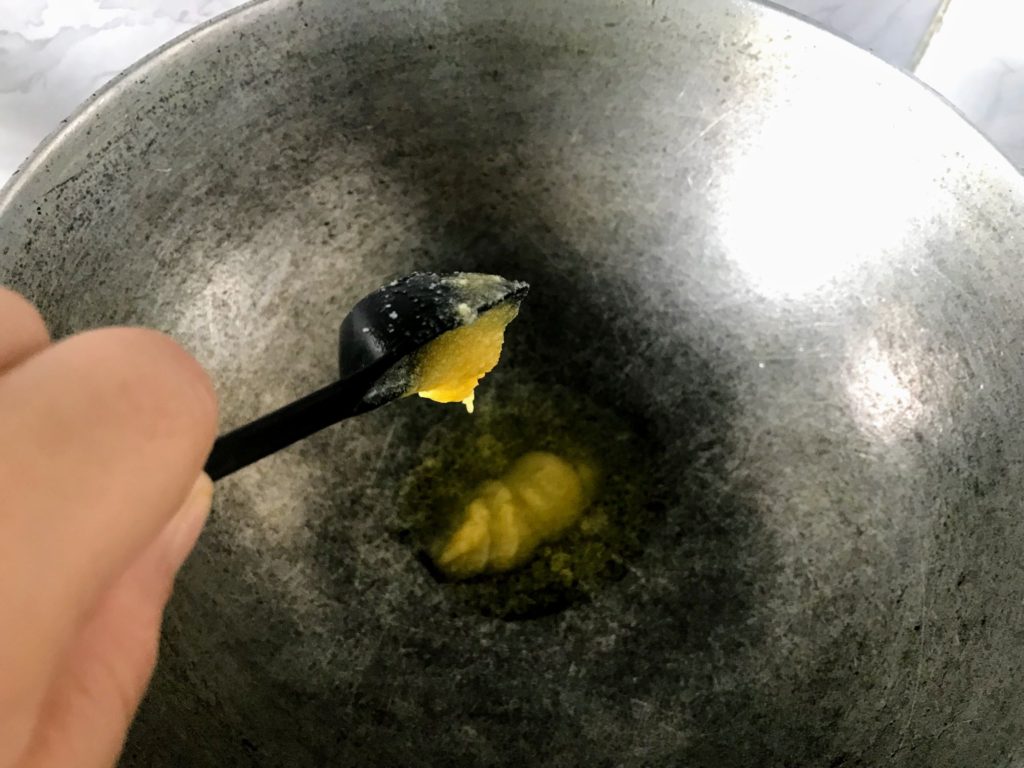
Heat a wok and pour ghee into the wok.
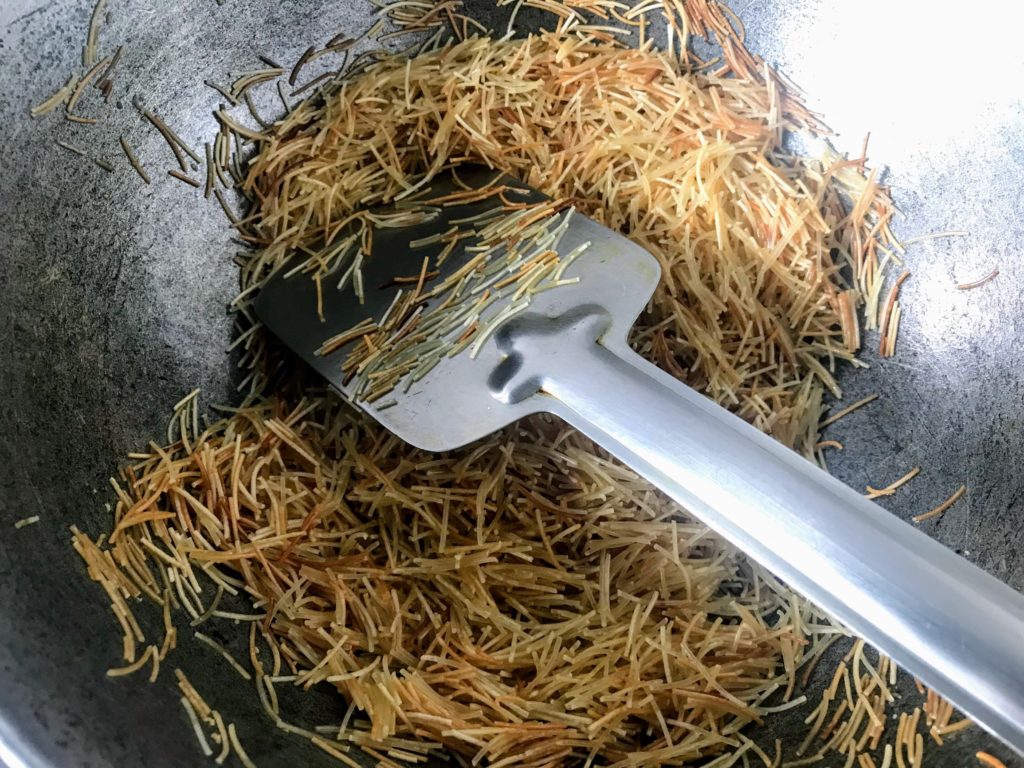
Roast vermicelli for 4-5 minutes in ghee. Shift the roasted vermicelli in a bowl or container.
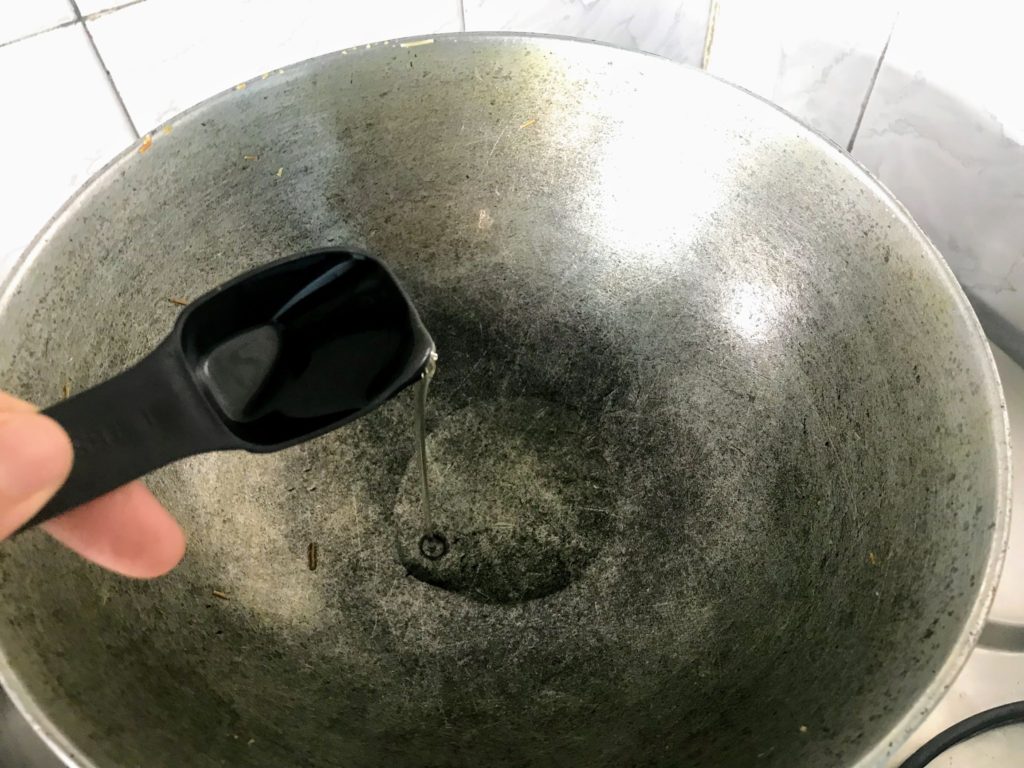
Add oil in the same wok.
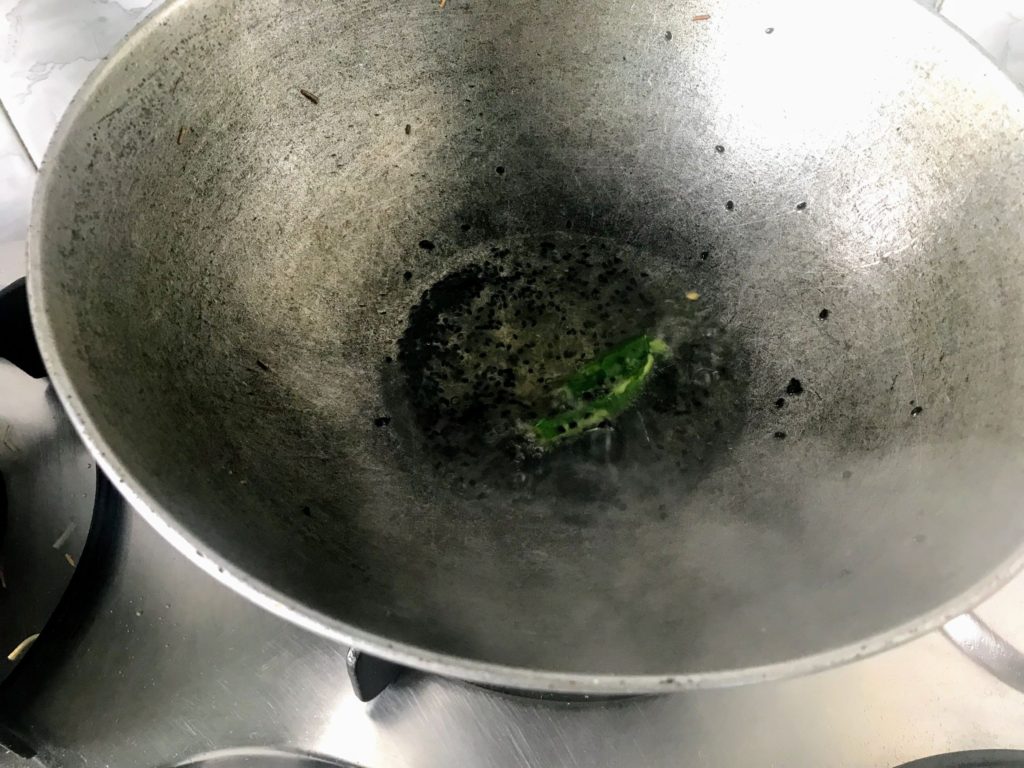
Temper the oil with nigella seeds and green chilli.
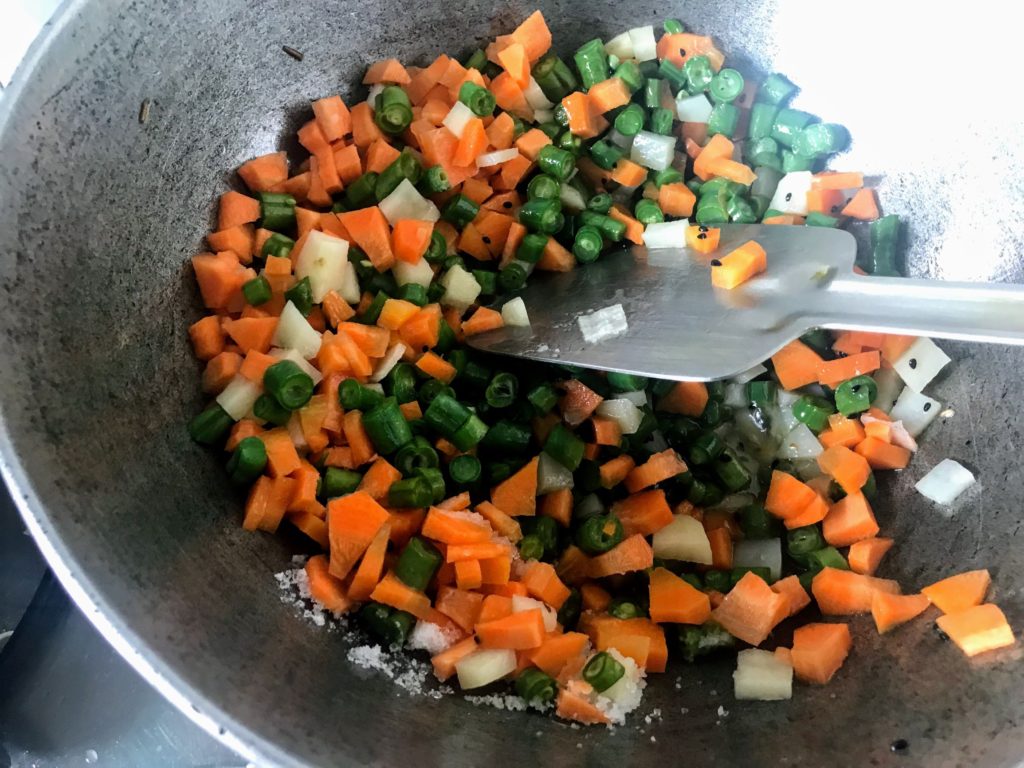
Add the vegetables into the wok, followed by salt and sugar. Stir and mix them.
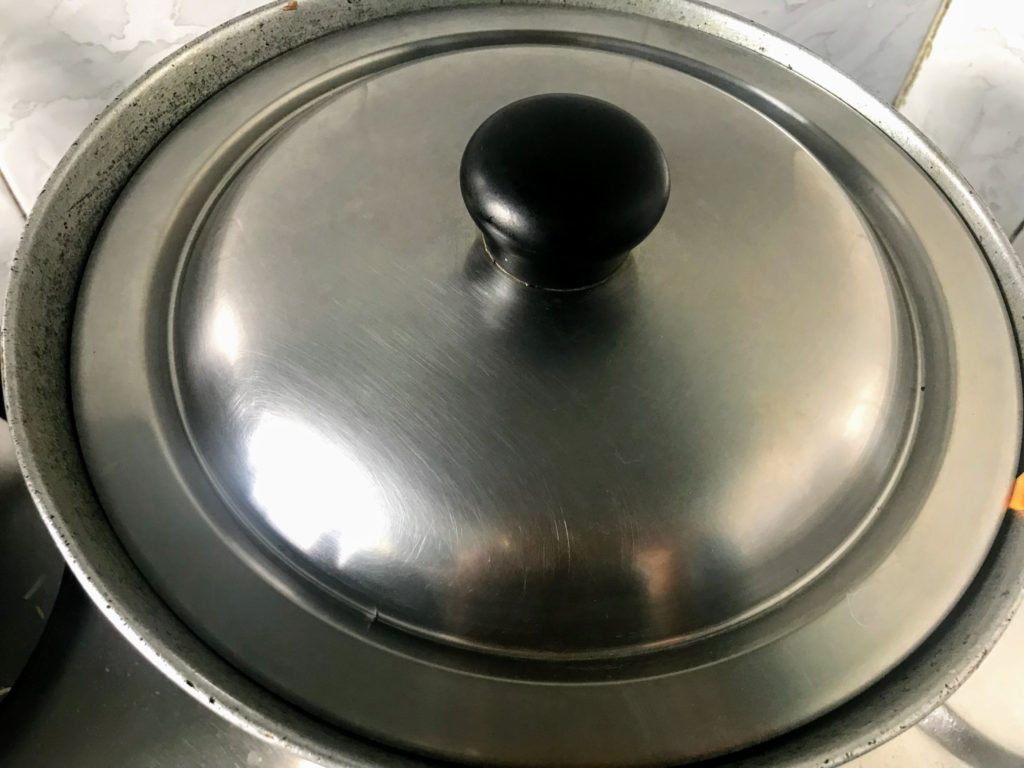
Cover and let the vegetables cook on low flame.
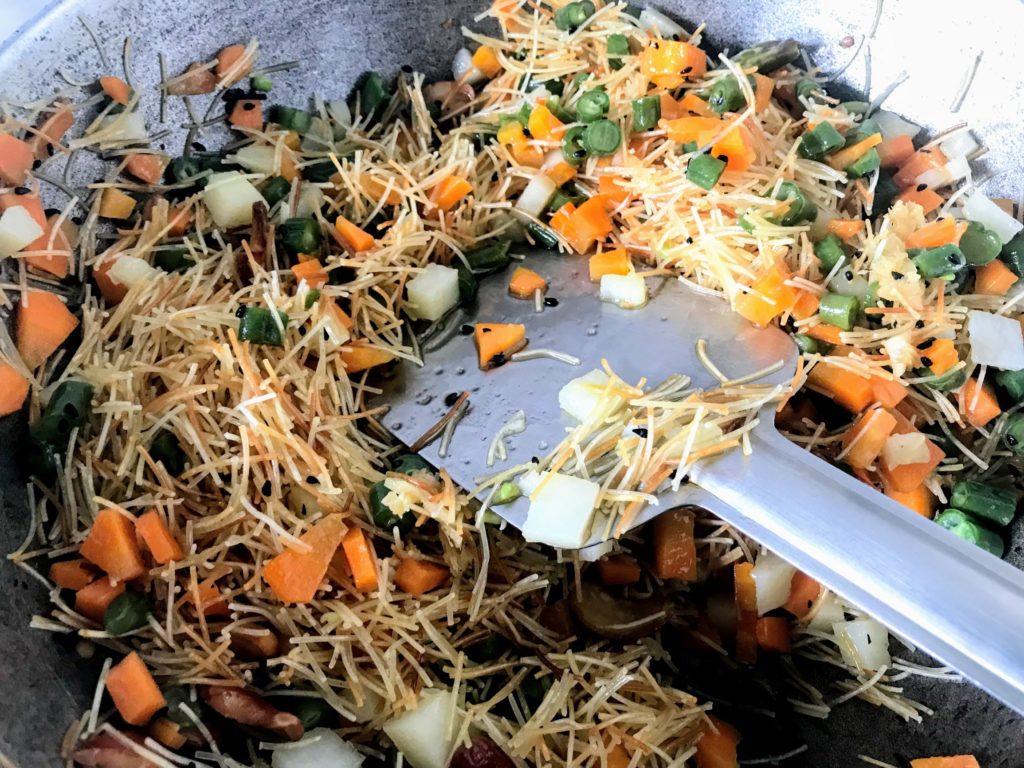
Add the roasted vermicelli. Stir and mix the vermicelli with vegetables.
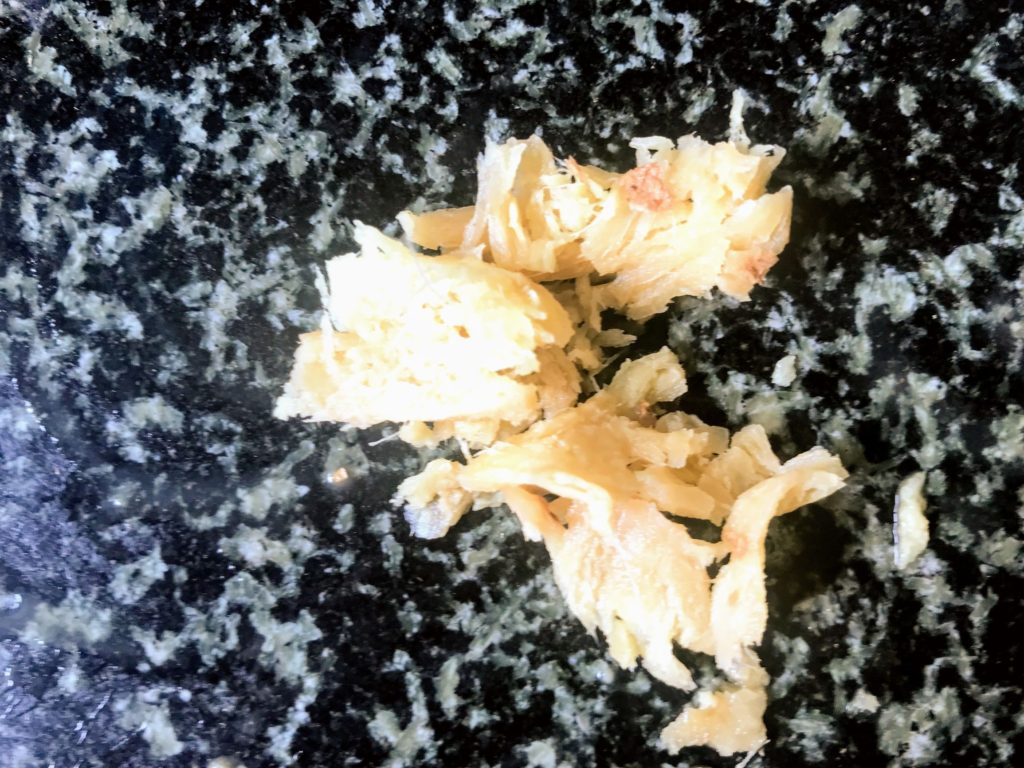
Add crushed ginger.
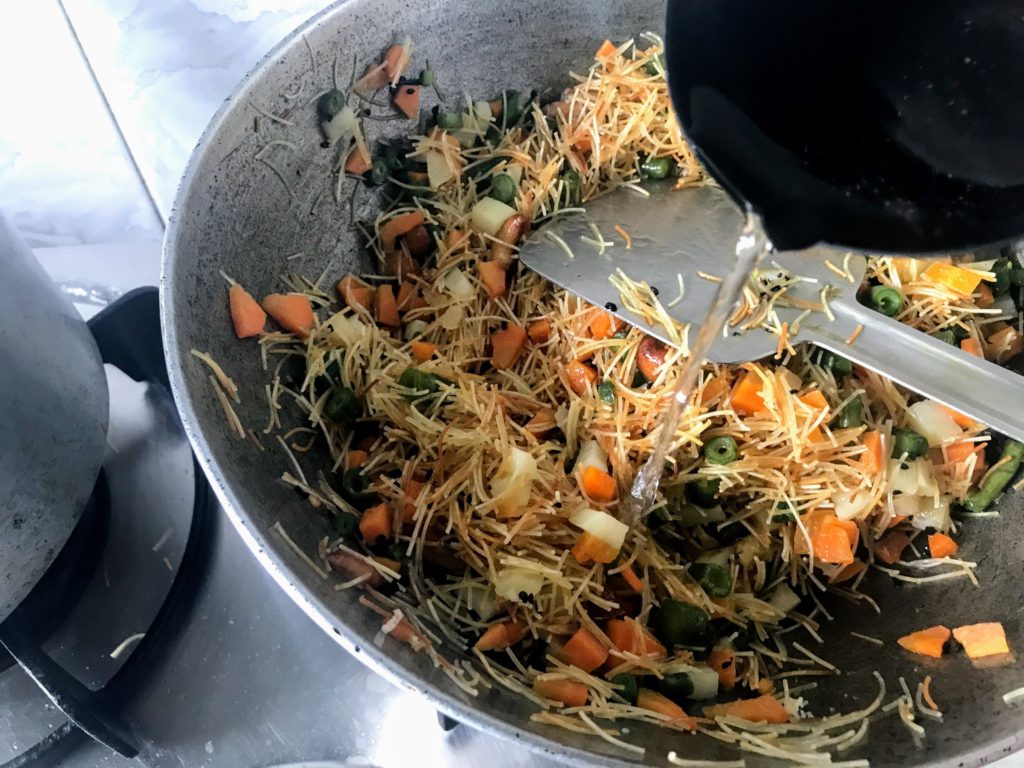
Add water and cook till vermicelli soaks water and is sufficiently soft.
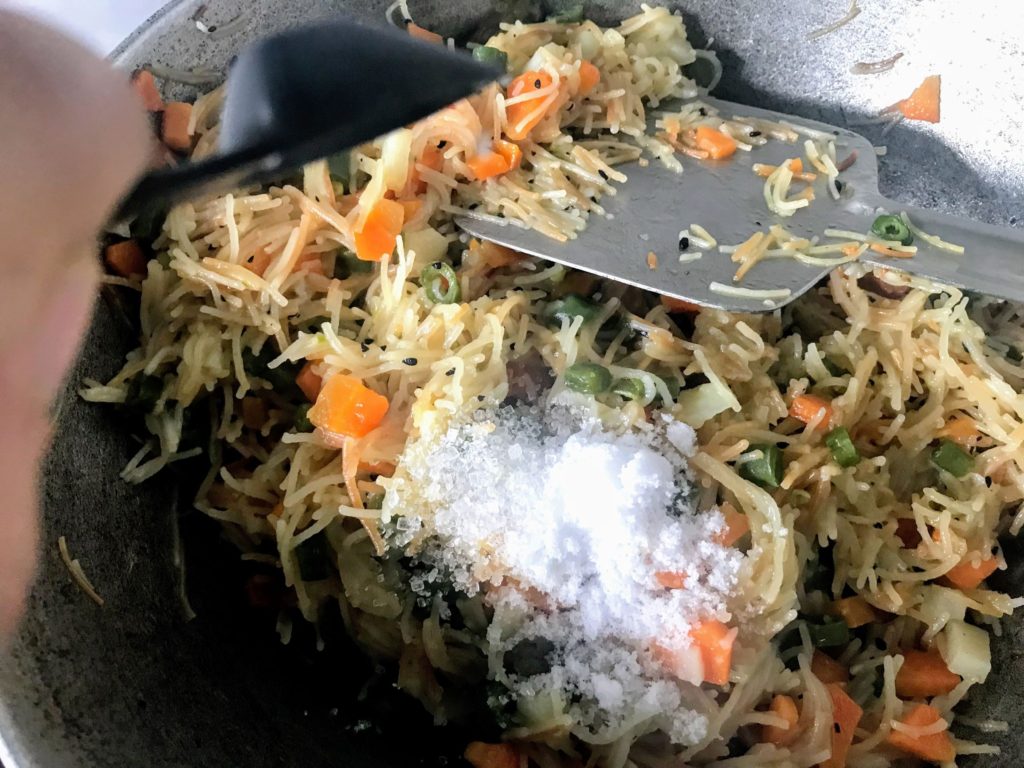
Taste and adjust salt and sugar.
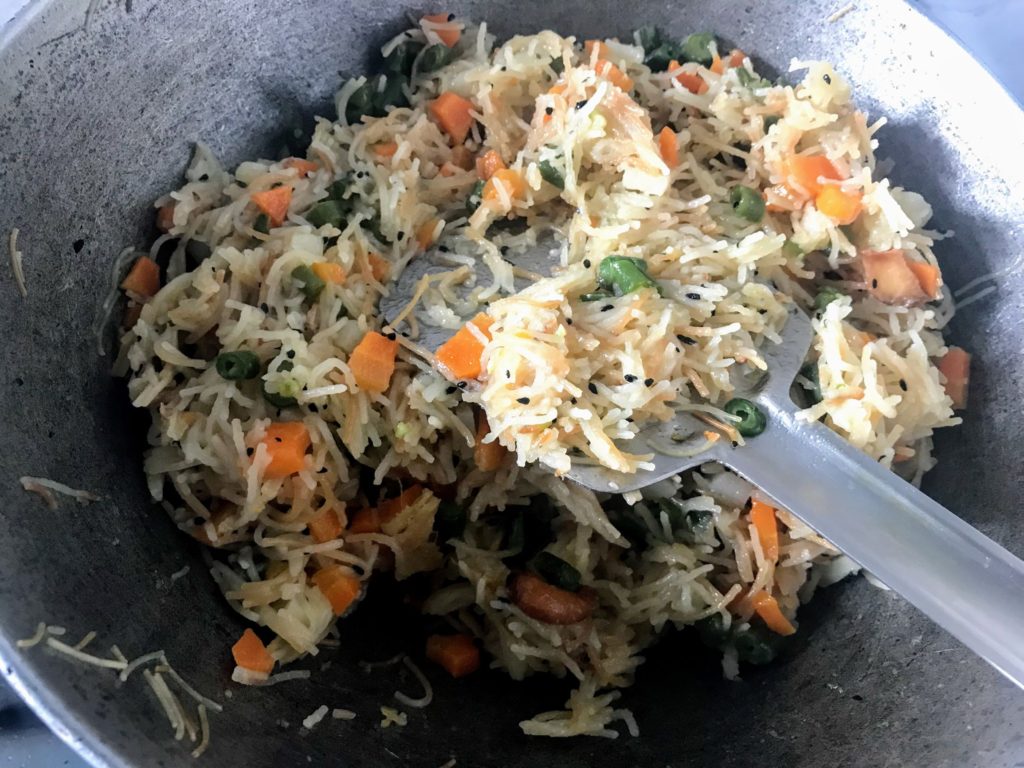
Switch off the flame and enjoy the dish hot.
Tips:
- Keep the size of the chopped vegetables roughly same
- Don’t keep any time gap between heating the pan or wok, pouring ghee and roasting vermicelli, as ghee burns faster, which might leave a burning aroma on vermicelli sticks
- Although I have kept all the vegetables soaked in water after chopping them, but you can only keep the diced potatoes soaked in water to prevent oxidation of potato pieces
- To get the perfect texture of cooked vermicelli, add water in parts while cooking and check the firmness of vermicelli, after vermicelli soaks water in the pan. Add more water if required
- Don’t overcook the vegetable pieces. They just need to be tender enough, so that they can be consumed effortlessly
